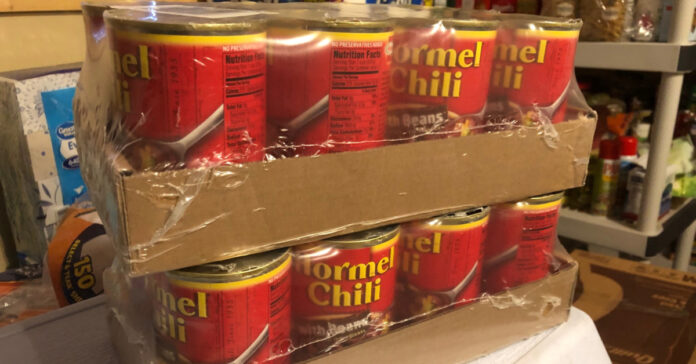The mainstream media is finally telling us what we have known for six months or more: Inflation is hitting us everywhere, not just at the gas station. As this article that first appeared in the New York Times shows, they are finally acknowledging inflation impacts consumers more than the government data shows:
“Some described lowering the heat this winter to save money, cutting expenses like family vacations and restaurant meals, and delaying home repair projects. People detailed coping strategies, including comparison shopping, buying in bulk — or, sometimes painfully, simply doing without.
“In some ways, the responses show consumers observing inflation differently than government policymakers and statistics do.”
No kidding.
They have yet to tie the cutting of expenses like vacations and restaurant meals to a coming recession. At this rate, we won’t see the mainstream news cover that angle for another three or four months.
Warm Chili Feelings
No, this is not another post about our winter weather. Sixteen cans of Hormel chili were delivered today, and that made me happy. The cost was $1.50 per can on Amazon, which is less than the $1.92 at Walmart. I try to avoid shopping on Amazon, but when I saw the price, I jumped on it and bought two cases of eight cans, acting before they raised the price.
Each can has two servings of 270 calories, 9 grams of fat, 31 grams of carbohydrates, and 17 grams of protein. Serve over a bed of rice or mix with elbow macaroni or mac and cheese (to make chilimac) and you have a complete prepper meal for less than $1. A meal like that will fill your belly and give you the energy you need to work hard or stay warm on a cold day.
Is this how we like to eat every day? No, but I’m not planning to eat it every day. In an emergency, I’ll dig in and feel good about it. Meanwhile, it will sit on the shelf in our storeroom, just in case inflation becomes hyperinflation, the food crisis makes it impossible to buy ground meat, or we experience a world-shattering disaster.
Most importantly, buying the chili makes me feel good. It reassures me that I am doing something against a problem that I am largely powerless to stop or control. I cannot control inflation, but I can control how I respond to it. I cannot stop a war in Europe from spilling over, but I can make sure we are well fed if the grain shortage reaches our shores. This is an example of the topping up of our supplies I talked about in a prior post.
Getting Deals on Amazon
One way I find good prices is to put a few items in my Amazon shopping cart and then select “save for later.” When I visit the cart in the future, I get a message telling me what has changed. Here’s an example:

I also look at the individual “saved for later” items underneath the shopping cart. I can confirm if Amazon has low inventory, the product is out of stock, or there has been a price change. This can help me determine when to buy or if I should look for an alternative product, or shop elsewhere. Prices on Amazon.com seem to change far more frequently than they do on Walmart.com.
That is how I was able to snap up the chili when it dropped to almost half of what it sometimes sells for.
Stocking Up
I already had 36 cans of chili, including some white chicken chili and some without beans, but I felt another 16 would be a good addition to my prepper pantry. I tell you this not to brag, but to encourage you to stock up. If we see stagflation, hyperinflation, or a currency collapse, it could be several years before a recovery or rebuilding starts. You may need every can and box in your stash. For less than $25, I added a good chunk of macronutrients to my stash.









“I tell you this not to brag, but to encourage you to stock up”. I don’t think your bragging as your making a suggestion to supplement your pantry. Not everyone has a large amount of disposable income to purchase larger quantities at one time. I personally keep track of prices on items my family likes to eat and pick up extra when I see a good price on them. When pasta goes on sale like 10 for $10, I’ll pick up twenty. When I see other items go on sale, I buy accordingly to replenish items I have in storage. With the inflationary prices we are seeing now, I encourage family and friends to buy smarter. For those just starting out and on limited income. Pick up extra items your family likes to eat. You can build a pantry to help see you through hard times.
Comments are closed.